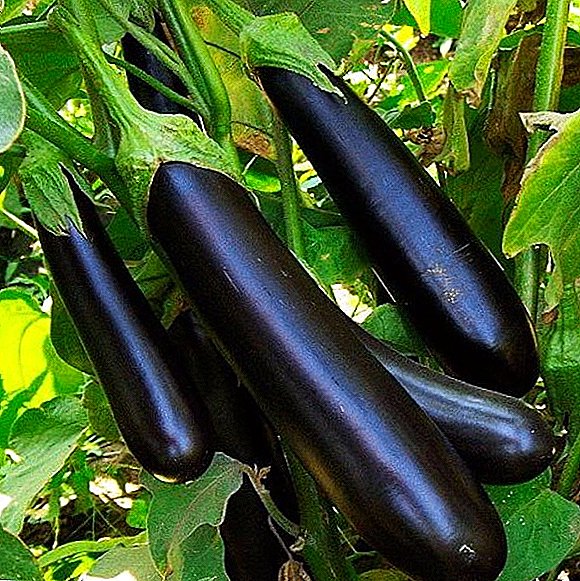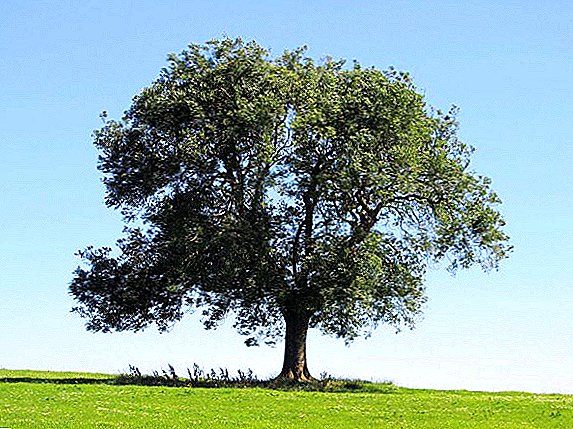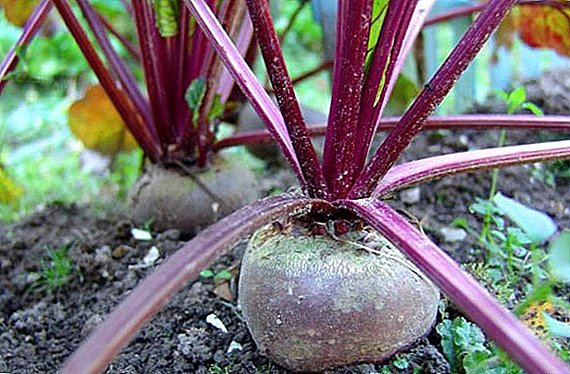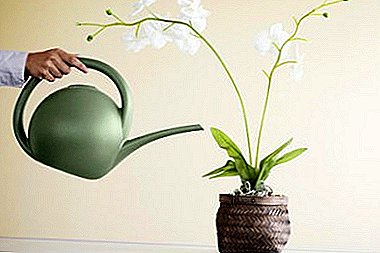
It is more difficult to care for orchids than for many other plants. They need meticulous care.
Moisturizing these plants during flowering is slightly different from watering during the rest of their life.
Proper watering of a blooming orchid is a very important factor that ensures the future health of this plant. She should not suffer from thirst, but also should not suffer from an overabundance of moisture.
Do I need to carry out watering a flowering plant?
In nature, the flowering of orchids is accompanied by the formation of seeds.that fly by the wind. But in such conditions as strong humidity, there is no possibility for this.
The mistakes that gardeners make arise from the desire for immense care for the plant. Often this plant is ruined by excessively abundant watering.
How often to moisten the soil?
 An orchid needs watering in autumn and winter no more than once a week and in the summer no more often than twice a week. It should be understood that wet the plant very often, namely daily or every other day is not required.
An orchid needs watering in autumn and winter no more than once a week and in the summer no more often than twice a week. It should be understood that wet the plant very often, namely daily or every other day is not required.
The frequency of moisture affect:
- temperature and humidity in the room;
- pot volume;
- the quality and composition of the soil;
- kind of orchids.
How often you need to water the orchid, read here.
When?
Watering should be in cases of drying of the root system and soil. In some cases, drying can even be delayed for a couple of days.
Than?
For watering orchids use melt or rain water. But, often, if you are in the city, it is impossible. Tap water may also come up. In this case, the water should be settled during the day to release chlorine from it and heat it to room temperature.
About what kind of water to water the orchid, we wrote here.
General rules
Dryness conditions are more suitable for this plant than excessive moisture.
When the flower dries out, certain signs begin to appear, such as wilting of the petals and the appearance of wrinkles on their surface. And with excessive watering there is yellowing of leaves and darkening of the roots, which indicates rotting of the plant.
From this it follows that the strengthening of soil moisture should be carried out only at the end of flowering.
About how to water the orchid when it blooms, you can give the following tips:
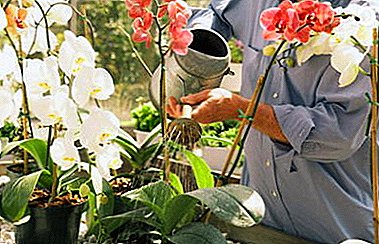 during the summer blooming of buds, it is necessary to increase the degree of moisture every three days;
during the summer blooming of buds, it is necessary to increase the degree of moisture every three days;- in winter, when releasing flowers, it is necessary to moisten the soil twice a week;
- when watering should take breaks to dry the soil;
- warm, distilled water is used.
Too much moisture causes rotting of the roots, leading to the death of the orchid.. In winter, the plant breaks away from water and sunlight. As a result, the flower is moistened incrementally and placed closer to the window. In the summer, good feeding and moisture in the right quantities will positively affect the plant.
Watering blooming orchids produce, fully knowing all the details of this process. You should properly care for the plant and use only the separated liquid. Then the orchid will stably blossom.
How to carry out the procedure?
When flowering, this plant requires more water than if it was at rest. At this time, it is moisturized more often. Under optimal conditions, when the necessary humidity and light are present, this is done every three days. You should not pour water on the root. Watering plants usually combine fertilizing plants with mineral fertilizers..
The soil determines how much moisture you need. Under dry conditions, an increased amount of fluid is required. In the presence of high humidity and low light humidification can be carried out less often, the number of times in five days.
It is necessary that the container for orchids had holes for leakage of excess water. Otherwise, the liquid will accumulate in the middle of the pot. This is a direct cause of the rot of the orchid's roots and its death.
For this flower its roots are of great importance. This is the main component of his life support. As soon as a disease or problem begins in the ear of an orchid, negative changes are displayed on the whole plant. Through the root part of the process of absorption of water, without which its further transportation is impossible. When absorption processes are disturbed, wilting of leaves and flowers begins. As a result, with excessive watering, the plant may die.
About how you can water the orchid, read our article.
Step-by-step instructions on soil moistening during the bud opening
At home
How to water a blooming orchid growing at home:
 establish regular watering with alternating evaporation of moisture (in a room with sufficient humidity and a sufficient amount of light - every three days);
establish regular watering with alternating evaporation of moisture (in a room with sufficient humidity and a sufficient amount of light - every three days);- It is better to underfill than overmoist. In summer, the water evaporates more quickly, so more water should be watered during this period, in the spring - more moderate. In winter, a special control is needed, because the orchid often blooms at this time, gardeners make a mistake, moisturizing the plant in the same mode as in summer. This is wrong; in winter watering should be kept to a minimum;
- excess water drains from the pan (orchid is extremely sensitive to an excess of moisture);
- water with soft, settled water;
- pour warm water (about +37 degrees Celsius).
We wrote here about how to water the orchid at home so that it blooms well, and here it is told how to do it if the flower grows in a pot or a pot.
On the street
For orchids outside:
- use soft (rain or heated melt) water;
- give the soil almost dry out;
- water more often than if orchids were in the room;
- once every three weeks spray with a mixture of water and horticultural oil (or dishwashing detergent) to protect against insects.
Orchid care requires some knowledge.. In the hands of an inexperienced grower, this flower will not reveal its full potential, diseases will begin and the flowering will stop. Most of the flowers of this species in nature are not in the water, due to the fact that their roots do not tolerate stagnant moisture and can rot from the salts in its composition.
Orchid is considered a capricious plant, but if certain rules are observed, this tropical beauty will feel great, regularly dispensing clusters of gorgeous flowers.


 during the summer blooming of buds, it is necessary to increase the degree of moisture every three days;
during the summer blooming of buds, it is necessary to increase the degree of moisture every three days; establish regular watering with alternating evaporation of moisture (in a room with sufficient humidity and a sufficient amount of light - every three days);
establish regular watering with alternating evaporation of moisture (in a room with sufficient humidity and a sufficient amount of light - every three days);
